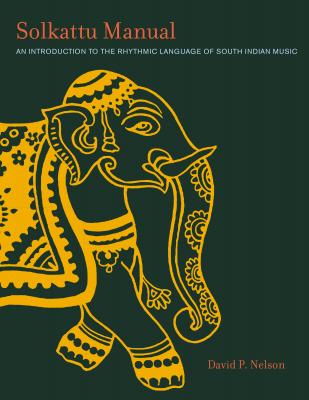ТОП просматриваемых книг сайта:
Solkattu Manual. David P. Nelson
Читать онлайн.Название Solkattu Manual
Год выпуска 0
isbn 9780819574480
Автор произведения David P. Nelson
Жанр История
Издательство Ingram
Solkattu Manual
Solkattu Manual
AN INTRODUCTION TO THE RHYTHMIC LANGUAGE OF SOUTH INDIAN MUSIC
David P. Nelson
WESLEYAN UNIVERSITY PRESS Middletown, Connecticut
Published by Wesleyan University Press, Middletown, CT 06459
Copyright © 2008 by David P. Nelson
All rights reserved
ISBN: 978-0-8195-7523-4
Wesleyan University Press is a member of the Green Press Initiative. The paper used in this book meets their minimum requirement for recycled paper.
Printed in the United States of America
5 4 3 2
The Library of Congress has catalogued the original printing as follows:
Nelson, David P.
Solkattu manual : an introduction to the rhythmic language of South Indian music / David P. Nelson.
p. cm.
ISBN 978-0-8195-6871-7 (pbk. : alk. paper)
1. Tala. 2. Carnatic music—Instruction and study. I. Title.
MT42.N34 2008
780.954'8—dc22
2008007654
CONTENTS
ACKNOWLEDGMENTS
This project would never have been possible without the efforts of T. Ranganathan and T. Viswanathan, who dedicated their careers to teaching Karnatak music in the United States. Their profundity as artists and teachers has been a lifelong source of inspiration to me. I am also grateful to my predecessor at Wesleyan, Ramnad V. Raghavan, for his support and continuing friendship.
I wrote this book during a sabbatical semester from Wesleyan University, for whose support I am grateful. I also thank Suzanna Tamminen and her staff at Wesleyan University Press for their well-organized help and good cheer.
Shortly after I began teaching at Wesleyan, my dissertation advisor and mentor Jon Barlow stopped me in the music department lobby one day and asked, “How would you convince a liberal arts music program that they should teach solkattu?” That question echoed in my mind for five years until I wrote this book. Thank you, Jon, for that and for so much more.
Allynn Wilkinson, Wesleyan’s Digitization specialist and a valued colleague and friend, was invaluable in putting together the video portion of this book. I could never have done it without her expertise, patience, and humor. Mariah Klaneski, Allynn’s choice as videographer and video editor, was patient with me and attentive to the material at every stage.
Ruby Ross, Aaron Paige, Dennis Chan, and Geoffrey Brown came together from distant places and performed beautifully for the video. My sincere thanks to all of them for their talent, hard work, and spirit. Fugan Dineen, my incomparable teaching assistant for the past four years, took meticulous notes during my solkattu classes and organized them so that I could see what we had done.
Jamey Haddad, Tim Eriksen, and Rory Stuart all made extremely helpful comments along the way. I thank them all, as well as Richard Winslow and David Reck for their insight and support.
For the notation, I used Solkattu Workshop, a program developed by Greg Jalbert at imaja.com. I appreciate Greg’s efforts in helping me get the most out of the software. For the text, I used UniTms, a Unicode transliteration font developed by Lloyd Anderson at Ecological Linguistics.
My heartfelt thanks to my friend and translator Christian Scheuber, for his sharp eyes in identifying typos and unclear passages in the first edition.
Finally, but by no means least, my love and thanks to my wife Kim, whose unflagging mental, physical and spiritual support have made this and so many other projects worth doing.
Solkattu Manual

